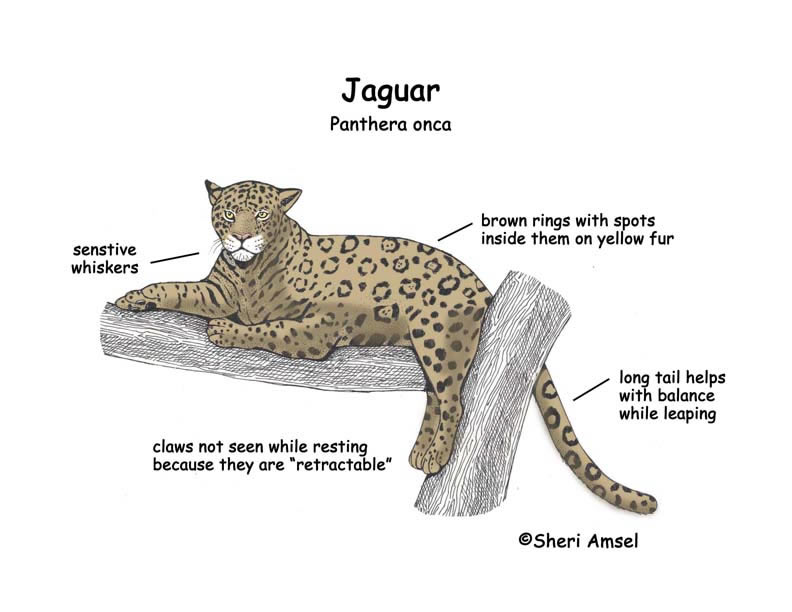

Jaguars are found from Mexico to Northern South America. They have been seen in the southwestern United States, but it is rare.
They live in rainforest, scrublands and swamps.
Jaguars can be up to 8 feet long including their tail. Their spots are actually rings with spots inside them. This is how you can tell the difference between a jaguar and a leopard, which has solid spots.
They kill their prey by biting through their skull.
Jaguars hunt capybara and wild pigs, crocodiles and rodents.
Predator is man.
Jaguars live alone except when they come together to mate. Females are pregnant for 100 days (gestation) and have one to 6 young.
They can live up to 15 years in the wild. They are listed as Lower Risk - near threatened on the CITES List (International List) and endangered on the U.S. Federal Endangered Species List.
Kingdom: Animalia
Phylum: Chordata
Subphylum: Vertebrata
Class: Mammalia
Order: Carnivora
Suborder: Feliformia
Family: Felidae
Subfamily: Pantherinae
Genus: Panthera
Species: Panthera onca
When you research information you must cite the reference. Citing for websites is different from citing from books, magazines and periodicals. The style of citing shown here is from the MLA Style Citations (Modern Language Association).
When citing a WEBSITE the general format is as follows.
Author Last Name, First Name(s). "Title: Subtitle of Part of Web Page, if appropriate." Title: Subtitle: Section of Page if appropriate. Sponsoring/Publishing Agency, If Given. Additional significant descriptive information. Date of Electronic Publication or other Date, such as Last Updated. Day Month Year of access < URL >.
Amsel, Sheri. "Jaguar" Exploring Nature Educational Resource ©2005-2024. December 13, 2024
< http://www.exploringnature.org/db/view/401 >

